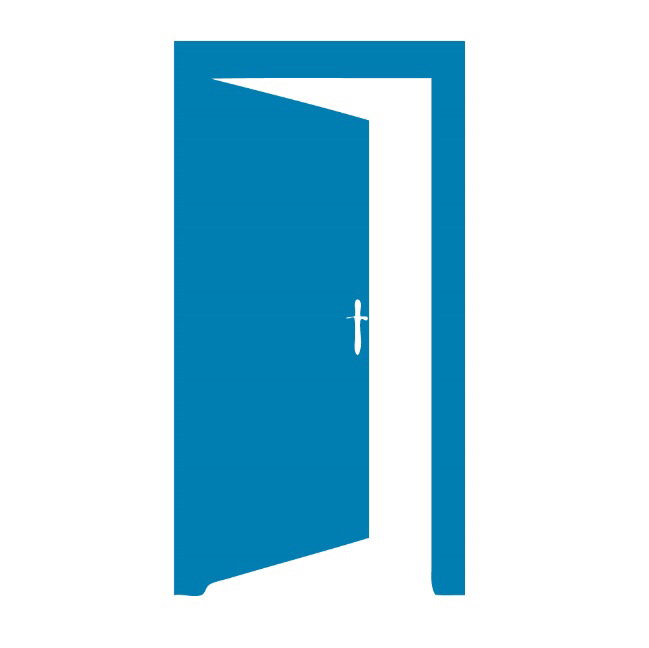INFORMATION
-
Site conducted
-
Housing Authority's Works Order Number
-
Location
-
Conducted on
-
Document No.
REMEDIATION
ELECTRICAL SAFETY DEVICE REMEDIATION
-
(R.1) Confirm if the remediation was either for a Safety Switch, Smoke Alarm, Wireless Interconnect or Main Earth.
- MAIN EARTH
- SAFETY SWITCH
- SMOKE ALARM
- WIRELESS INTERCONNECT
- N/A
MAIN EARTH REPAIR DETAILS
-
(R.M.1) Confirm what type of remediation work was performed on the Main Earth.
-
(R.M.1.O) Provide further details of remediation performed on the Main Earth.
-
Add Safety Switch Details
SAFETY SWITCH
-
(R.S.1) Confirm what remediation work was performed on the the Safety Switch.
OLD SAFETY SWITCH DETAILS
-
(R.S.1.X) Confirm the reason for replacement.
- Failed Push Button Test
- Failed Trip Time Test
- Incorrect kA rating
- Incorrect Load Ampere
- Incorrect mA rating
- Recalled Device
- Other
-
(R.S.1.X.O) Confirm the reason for replacement.
-
(R.S.1.R) Confirm sub-circuit protected by the OLD safety switch, that is if it is Power, Light or Other.
-
(R.S.1.R.O) Confirm the number ID of the safety switch.
- O1
- O2
- O3
- O4
- O5
- O6
- O7
- O8
- O9
- O10
- O11
- O12
- O13
- O14
- O15
- OTHER
-
(R.S.1.R.O.1) Identify safety switch.
-
(R.S.1.R.L) Confirm the number ID of the safety switch.
- L1
- L2
- L3
- L4
- L5
- L6
- L7
- L8
- L9
- L10
- OTHER
-
(R.S.1.R.L.1) Identify safety switch.
-
(R.S.1.R.P) Confirm the number ID of the safety switch.
- P1
- P2
- P3
- P4
- P5
- P6
- P7
- P8
- P9
- P10
- P11
- P12
- P13
- P14
- P15
- OTHER
-
(R.S.1.R.P.1) Identify safety switch.
-
(R.S.1.R.M) Confirm the Make of the OLD safety switch.
- ABB
- CLIPSAL
- Dielle
- EATON
- HAGER
- HEINELEC
- HEINEMAN
- HPM
- LEGRAND
- LANSON
- MACK
- MOELLER
- NHP
- QCE
- QUICKLAG
- SCHNEIDER
- OTHER
-
(R.S.1.R.M.O) Confirm the Make of the OLD safety switch.
-
(R.S.1.R.T) Confirm the Type of the OLD safety switch.
-
(R.S.1.P) Once uninstalled - take clear, centred and legible photographs of the front and serial number on the side of the old Safety Switch.
NEW SAFETY SWITCH DETAILS
-
(R.S.1.R.N.M) Confirm the Make of the new Safety Switch.
-
(R.S.1.R.N.M.I) Confirm the Make of the Industrial Safety Switch.
-
(R.S.1.R.N.M.I.M) Confirm the Model of the Industrial Safety Switch.
-
(R.S.1.R.N.C.A) Confirm the Model of the ABB Switch.
- FH202 AC-40/0,03
- DS201BS C10 AC30
- DS201BS C16 AC30
- DS201BS C20 AC30
- DS201BS C25 AC30
- DS201BS C32 AC30
- DSN201 C10 AC30
- DSN201 C16 AC30
- DSN201 C20 AC30
- DSN201 C25 AC30
- OTHER
-
(R.S.1.R.N.C.A.1) Record the Model of the ABB Switch.
-
(R.S.1.R.N.C.C) Confirm the Model of the Clipsal Switch.
- RCD240/30
- RCBM210/30
- RCBM216/30
- RCBM220/30
- RCBM225/30
- RCBM232/30
- 4RCBE210/30S40
- 4RCBE216/30S40
- 4RCBE220/30S40
- 4RCBE225/30S40
- 4RCBE232/30S40
- OTHER
-
(R.S.1.R.N.C.C.1) Record the Model of the Clipsal Switch.
-
(R.S.1.R.N.C.L) Confirm the Model of the legrand Switch.
- TX3 4115 10
- 4110 00
- 4110 02
- 4110 03
- 4110 04
- 4110 05
- 4111 29
- 4111 31
- 4111 32
- 4111 33
- 4111 34
- OTHER
-
(R.S.1.R.N.C.L.1) Record the Model of the legrand Switch.
-
(R.S.1.R.N.C.N) Confirm the Model of the NHP Switch.
- MOD6-RCCB-2-40-30
- M6RCB-D-10-30-CAN
- M6RCB-D-16-30-CAN
- M6RCB-D-20-30-CAN
- M6RCB-D-25-30-CAN
- M6RCB-D-32-30-CAN
- OTHER
-
(R.S.1.R.N.C.N.1) Record the Model of the NHP Switch.
-
(R.S.1.R.N.P) Take a clear, centred and legible photograph of serial/batch number. NOTE: This serial/batch number is found on either the front of the box of the new Safety Switch, or on the side of the new Safety Switch
-
(R.S.1.R.N.S) Confirm the serial/batch number of the safety switch.
-
(R.S.1.R.N.I) Take a clear, centred and legible close-up photograph of the front of the new installed Safety Switch. (NOT THE WHOLE SWITCHBOARD).
NEW SAFETY SWITCH DETAILS
-
(R.S.1.N.M) Confirm the Model of the new Safety Switch.
-
(R.S.1.N.C.N) Confirm the Model of the NHP Switch.
- MOD6-RCCB-2-40-30
- M6RCB-D-10-30-CAN
- M6RCB-D-16-30-CAN
- M6RCB-D-20-30-CAN
- M6RCB-D-25-30-CAN
- M6RCB-D-32-30-CAN
- OTHER
-
(R.S.1.N.C.N.1) Record the Model of the NHP Switch.
-
(R.S.1.N.C.A) Confirm the Model of the ABB Switch.
- FH202 AC-40/0,03
- DS201BS C10 AC30
- DS201BS C16 AC30
- DS201BS C20 AC30
- DS201BS C25 AC30
- DS201BS C32 AC30
- DSN201 C10 AC30
- DSN201 C16 AC30
- DSN201 C20 AC30
- DSN201 C25 AC30
- OTHER
-
(R.S.1.N.C.A.1) Record the Model of the ABB Switch.
-
(R.S.1.N.C.C) Confirm the Model of the Clipsal Switch.
- RCD240/30
- RCBM210/30
- RCBM216/30
- RCBM220/30
- RCBM225/30
- RCBM232/30
- 4RCBE210/30S40
- 4RCBE216/30S40
- 4RCBE220/30S40
- 4RCBE225/30S40
- 4RCBE232/30S40
- OTHER
-
(R.S.1.N.C.C.1) Record the Model of the Clipsal Switch.
-
(R.S.1.N.C.H) Confirm the Model of the legrand Switch.
- TX3 4115 10
- 4110 00
- 4110 02
- 4110 03
- 4110 04
- 4110 05
- 4111 29
- 4111 31
- 4111 32
- 4111 33
- 4111 34
- OTHER
-
(R.S.1.N.C.H.1) Record the Model of the legrand Switch.
-
(R.S.1.N.P.S) Take a clear, centred and legible photograph of serial/batch number. NOTE: This serial/batch number is found on either the front of the box of the new Safety Switch, or on the side of the new Safety Switch
-
(R.S.1.N.S) Confirm the batch/serial number of the safety switch.
-
(R.S.1.N) Confirm sub-circuit protected by the new safety switch, that is, if it is Power, Light or Other.
-
(R.S.1.N.O) Confirm the number ID of the safety switch.
- O1
- O2
- O3
- O4
- O5
- O6
- O7
- O8
- O9
- O10
- O11
- O12
- O13
- O14
- O15
- OTHER
-
(R.S.1.N.O.1) Identify safety switch.
-
(R.S.1.N.L) Confirm the number ID of the safety switch.
- L1
- L2
- L3
- L4
- L5
- L6
- L7
- L8
- L9
- L10
- OTHER
-
(R.S.1.N.L.1) Identify safety switch.
-
(R.S.1.N.P) Confirm the number ID of the safety switch.
- P1
- P2
- P3
- P4
- P5
- P6
- P7
- P8
- P9
- P10
- P11
- P12
- P13
- P14
- P15
- OTHER
-
(R.S.1.N.P.1) Identify safety switch.
-
(R.S.1.R.N.P) Take a clear, centred and legible close-up photograph of the new installed Safety Switch. (NOT THE WHOLE SWITCHBOARD).
-
Add Smoke Alarm Details
SMOKE ALARM
-
(R.A.1) Confirm what remediation work was performed on the the Smoke Alarm.
NEW SMOKE ALARM DETAILS
-
(R.N.A.1.L) Confirm the location of the NEW smoke alarm.
- Bedroom
- Bedroom 2
- Bedroom 3
- Bedroom 4
- Community Room
- Dining
- Entry
- Family Room
- Games Room
- Kitchen Dining
- Laundry
- Lounge
- Lounge Kitchen
- Passage
- Passage 2
- Passage 3
- Stairwell
- Sleep Out
- Study/Office
- OTHER
-
(R.N.A.1.M) Confirm the Make of the NEW smoke alarm.
-
(R.N.A.1.M.B) Confirm the Model of the NEW smoke alarm.
-
(R.N.A.1.M.P) Confirm the Model of the NEW smoke alarm.
OLD SMOKE ALARM DETAILS
-
(R.A.1.L) Confirm the location of the OLD smoke alarm.
- Bedroom
- Bedroom 2
- Bedroom 3
- Bedroom 4
- Community Room
- Dining
- Entry
- Family Room
- Games Room
- Kitchen Dining
- Laundry
- Lounge
- Lounge Kitchen
- Passage
- Passage 2
- Passage 3
- Stairwell
- Sleep Out
- Study/Office
- OTHER
-
(R.A.1.I) Confirm the reason for replacing the OLD Smoke Alarm.
- Constantly Chirping
- Dirt Caused Failure
- Date Expired
- Non-Approved Smoke Alarm
- Pest Infestation
- Push Button Test Failed
- Wilful Damage
- OTHER
-
(R.A1.W.P) Take a clear, centred and legible photograph demonstrating the wilful damage to the OLD Smoke Alarm.
-
(R.A.1.O) Provide further details.
-
(R.A1.P) Take a clear, centred and legible photograph of the OLD Smoke Alarm. NOTE: Photographs required: 1. BACK - Writing on the back of the device. 2. FRONT - Showing the labelled Passage or Bedroom ID (ONLY IF REQUIRED) and expiry date in the format MM-YY. 3. SIDE - "Replace By" date on the side (ONLY IF PRESENT). If the Smoke Alarm is missing, damaged or dirty capture a image that demonstrates this.
-
(R.A.1.M) Confirm the Make of the OLD Smoke Alarm.
-
(R.A.1.M.O) Confirm the Make and Model of the OLD Smoke Alarm.
-
(R.A.1.M.P) Confirm the model of the OLD Smoke Alarm.
- 6000RL
- 5800RL-2
- 5800RL
- 4800RL
- 6000DCW
- PE10
- 10YPEW
- OTHER
-
(R.A.1.M.P.1) Provide model.
-
(R.A.1.M.B) Confirm the model OLD Smoke Alarm.
- EIPFSPTLH
- EIB605TYC
- EIB166e
- EIB3016
- EIB650iC
- OTHER
-
(R.A.1.M.B.1) Provide model.
-
(R.A.1.E) Confirm if there is a "Replace by" or manufactured date on the device.
-
(R.A.1.E.1) Confirm the expiry date of the OLD Smoke Alarm. NOTE: The Expiry date is determined by: 1. The "REPLACE BY" date found on the side of the device in format: 01/MM/YY, or if not available; 2. The manufacture date found on the back of the device plus 10 years, in format DD/MM/YY.
NEW SMOKE ALARM DETAILS
-
(R.N.A.1.M) Confirm the Make of the NEW smoke alarm.
-
(R.N.A.1.M.B) Confirm the Model of the NEW smoke alarm.
-
(R.N.A.1.M.P) Confirm the Model of the NEW smoke alarm.
-
Add Smoke Alarm Wireless Interconnect Details
WIRELESS
-
(R.A.1) Confirm what remediation work was performed on the the Wireless Interconnect.
OLD SMOKE ALARM WIRELESS INTERCONNECT DETAILS
-
(R.W.1.L) Confirm the location of the OLD Smoke Alarm Wireless Interconnect.
- Bedroom
- Bedroom 2
- Bedroom 3
- Bedroom 4
- Community Room
- Dining
- Entry
- Family Room
- Games Room
- Kitchen Dining
- Laundry
- Lounge
- Lounge Kitchen
- Passage
- Passage 2
- Passage 3
- Stairwell
- Sleep Out
- Study/Office
- OTHER
-
(R.W.1.I) Confirm the reason for replacing the OLD Smoke Alarm Wireless Interconnect.
-
(R.W.1.W.P) Take a clear, centred and legible photograph demonstrating the wilful damage to the OLD Smoke Alarm Wireless Interconnect.
-
(R.W.1.O) Provide further details.
-
(R.W.1.M) Confirm the Make of the OLD Smoke Alarm Wireless Interconnect.
-
(R.W.1.M.B) Confirm the model OLD Smoke Alarm Wireless Interconnect.
-
(R.W.1.M.B.1) Provide model.
-
(R.W.1.M.P) Confirm the model OLD Smoke Alarm Wireless Interconnect.
-
(R.W.1.P) Take a clear, centred and legible photo of the OLD Smoke Alarm Wireless Interconnect. NOTE: Photographs required: 1. WRITING - The device needs to be removed from the smoke alarm. The photo should show the details of the device including the "replace by" date. If the Smoke Alarm Wireless Interconnect is missing, damaged or dirty capture a image that demonstrates this.
-
(R.W.1.E) Confirm if there is a "Replace by" on the device.
-
(R.W.1.E.1) Confirm the expiry date of the OLD Smoke Alarm Wireless Interconnect. NOTE: The Expiry date is determined by: 1. The "REPLACE BY" date found on the device in format: 01/MM/YY.
NEW SMOKE ALARM WIRELESS INTERCONNECT DETAILS
-
(R.N.W.1.L) Confirm the location of the NEW Smoke Alarm Wireless Interconnect.
- Bedroom
- Bedroom 2
- Bedroom 3
- Bedroom 4
- Community Room
- Dining
- Entry
- Family Room
- Games Room
- Kitchen Dining
- Laundry
- Lounge
- Lounge Kitchen
- Passage
- Passage 2
- Passage 3
- Stairwell
- Sleep Out
- Study/Office
- OTHER
-
(R.N.W.1.M) Confirm the Make of the NEW Smoke Alarm Wireless Interconnect.
-
(R.W.1.M.B) Confirm the model NEW Smoke Alarm Wireless Interconnect.
-
(R.W.1.M.P) Confirm the model NEW Smoke Alarm Wireless Interconnect.
-
(R.N.W.1.P) Take a clear, centred and legible photographs of the NEW Smoke Alarm Wireless Interconnect. NOTE: Photographs required: 1. WRITING - Before installing in the Smoke Alarm. The Photo should show the details of the device including the "replace by" date. 2. INSTALLED - Show the NEW Smoke Alarm Wireless Interconnect installed in the Smoke Alarm.
-
PROCEED TO THE NEXT SECTION.
PRE-TESTING VISUAL CHECKS
Pre-Test Procedure
-
(A) INSTRUCTION: Log into the Multifunction Electrical Installation Tester and enter the Housing Authority Work Order Number.
Main Earth
-
(B) Confirm the Main Earth type
- External electrode
- Complex (sub-main/running earth)
-
(B.L) Confirm the location of the earth electrode.
- Front Tap
- Rear Tap
- Left Side Tap
- Right Side Tap
- Exterior: Left Side
- Exterior: Right Side
- Exterior: Front
- Exterior: Rear
-
NOTE: WHERE THE EARTH ELECTRODE CANNOT BE LOCATED, REMEDIATE AS PER BUSINESS RULE TO ENSURE THE PROPERTY COMPLIES WITH WIRING RULES. VARY THE WORKS ORDER AND ADD THE NEW MAIN EARTH TO THE REMEDIATION SECTION OF THIS REPORT
-
(B.L.1) Confirm that the earth electrode location is identified at the main switchboard as per the requirements within the Wiring Rules.
-
(B.P) Take a clear and accurate photograph of the earth electrode.
-
(C) Confirm that a visual inspection of the main earth has been performed to ensure that it appears to be mechanically sound.
Switchboard
-
(D) Confirm the location of the switchboard.
- Bedroom
- Bedsitter
- Carport
- Dining
- Entry
- External
- External Wall
- Family
- Games Room
- Garage
- Kitchen
- Kitchen / Dining
- Laundry
- Lounge
- Lounge / Kitchen
- Out Buildings
- Passage
- Patio / Pergola
- Roof
- Shed
- Sleepout
- Stair Cupboard
- Stairwell
- Storeroom
- Underhouse
-
(E) Confirm that the switchboard is labelled as per the requirements within the Wiring Rules.
-
(F) Confirm that each Safety Switch in the switchboard has been numbered as per Principals requirements from the top left down.<br><br>Power RCBOs: P1, P2, P3, etc.<br>Lighting RCBOs: L1, L2, L3, etc.<br>All RCDs and dedicated RCBOs (AirCon, Fridge, etc.): O1, O2, O3, etc.<br><br>Numbering must be clear and concise. <br><br>If necessary, use methylated spirits to remove any errors or previous writing.
ENERGISED TESTS
Line Impedance
-
(1) Confirm a Line Impedance test has been completed between the incoming phase(s) on the line side of the main switch and the property neutral link.<br><br>Test Sequence # 31<br><br>Max Permitted: 1ΩZ<br><br>NOTE: If above 1ΩZ, contact the Network Operator immediately and record the reference number in Limitations. <br><br>If this is a unit or communal area within a strata complex that has a common distribution board then do NOT perform the Line Impedance test and select Common Services.<br><br>Where the test cannot be performed following a risk assessment, select N/A.
-
NOTE: YOU ARE NOT REQUIRED TO PERFORM A LINE IMPEDANCE TEST IF THE WORKS PERFORMED ARE AT THE COMMON SERVICE SWITCHBOARD.
Safety Switches
-
(2) Confirm if there are any Light or Power (GPO) circuits or any other circuit protected by a Safety Switch in the switchboard.
-
Add Safety Switch
SAFETY SWITCH
-
(2.M) Confirm Safety Switch make.
- ABB
- CLIPSAL
- Dielle
- EATON
- HAGER
- HEINELEC
- HEINEMAN
- HPM
- LEGRAND
- LANSON
- MACK
- MOELLER
- NHP
- QCE
- QUICKLAG
- SCHNEIDER
- OTHER
-
(2.M.O) Add Make.
-
(2.Q) Confirm if the EATON/QUICKLAG Safety Switch has a Green Test Button and/or is one of the following:<br><br>EATON/QUICKLAG (Green Test Button)<br>ELQ110C3TW ELQ210C3TW<br>ELQ116C3TW ELQ216C3TW<br>ELQ120C3TW ELQ220C3TW<br>ELQ125C3TW ELQ225C3TW<br>ELQ132C3TW ELQ232C3TW<br><br>ELQ110C1TW ELQ110C10TW<br>ELQ116C1TW ELQ116C10TW<br>ELQ120C1TW ELQ120C10TW<br>ELQ125C1TW ELQ125C10TW<br>ELQ132C1TW ELQ132C10TW
-
NOTE: You are not required to replace this device, however, on completion of this Compliance Certificate please copy in the following email address:
EATONELQ@housing.wa.gov.au -
(2.X) Confirm that the DIELLE, HAGER, LANSON or MACK safety switch NOT one of the following models:<br><br>DIELLE:<br><br>ALL Dielle RCBO models<br><br>HAGER:<br>AD310T<br>AD316T<br>AD320T<br>AD325T<br><br>LANSON:<br>LANRCBO610SA<br>LANRCBO616SA<br>LANRCBO620SA<br>LANRCBO625SA<br>LANRCBO632SA<br>OR IF IT HAS A GREEN SWITCH<br><br>MACK:<br><br>ALL Mack RCBO models<br>
-
-
(2.T) Confirm Safety Switch type.
-
(3) Inspect all the ratings for the Safety Switch and verify that it has:
-
(3.K) Correct kA rating - minimum 4.5kA.
-
(3.M) Correct Milliamperes rating - 30mA.
-
(3.L) Correct Load Amperes rating.
-
(4) Using the integrated push button, test the Safety Switch.
-
(5) Test the Safety Switch.<br><br>Test Sequence # 37/38<br><br>Max Permitted (Injection test only): 40 m/s<br><br>NOTE: If an alternative method is used to test the Safety Switch, add a Limitation.
-
(6) Confirm sub-circuit protected by the Safety Switch is Power, Light or Other.
-
(6.O) Confirm the number ID of the Safety Switch.
- O1
- O2
- O3
- O4
- O5
- O6
- O7
- O8
- O9
- O10
- O11
- O12
- O13
- O14
- O15
- OTHER
-
(6.O.1) Identify Safety Switch.
-
(6.L) Confirm the number ID of the Safety Switch.
- L1
- L2
- L3
- L4
- L5
- L6
- L7
- L8
- L9
- L10
- OTHER
-
(6.L.1) Identify Safety Switch.
-
(6.P) Confirm the number ID of the Safety Switch.
- P1
- P2
- P3
- P4
- P5
- P6
- P7
- P8
- P9
- P10
- P11
- P12
- P13
- P14
- P15
- OTHER
-
(6.P.1) Identify safety switch.
-
(7) Verify all necessary Power & Light circuits are protected by a Safety Switch.
-
(8) CONFIRM ALL SAFETY SWITCHES INSTALLED IN THE SWITCHBOARD HAVE BEEN VISUALLY SITED, RECORDED AND ARE SAFE, CLEAN AND WORKING.<br><br>(If NOT scroll up and add another device.)
DE-ENERGISED TESTS
Smoke Alarms
-
(9) Confirm if the smoke alarms are being monitored by a fire panel system that links back to base.<br><br>NOTE: If this is a communal area within a strata complex without any smoke alarms then select Common Services.
-
NOTE: YOU ARE NOT REQUIRED TO INSPECT OR TEST THE SMOKE ALARM SYSTEM IF IT IS MONITORED OR THE WORK ORDER WAS FOR THE COMPLEX COMMON AREAS.
-
Add Smoke Alarm details.
Smoke Alarm
-
(10) Confirm the Smoke Alarm location.
- Bedroom
- Bedsitter
- Carport
- Dining
- Entry
- External
- External Wall
- Family
- Games Room
- Garage
- Kitchen
- Kitchen / Dining
- Laundry
- Lounge
- Lounge / Kitchen
- Out Buildings
- Passage
- Patio / Pergola
- Roof
- Shed
- Sleepout
- Stair Cupboard
- Stairwell
- Storeroom
- Underhouse
-
(10.P) Confirm the Smoke Alarm has been numbered on the FRONT with the following number:
-
(10.B) Confirm the Smoke Alarm has been numbered on the FRONT with the following number:
- B1
- B2
- B3
- B4
- B5
- B6
- B7
- B8
- B9
- B10
- N/A
-
(10.L) Confirm the Smoke Alarm is in the correct location.
-
(11) Confirm that the Smoke Alarm is NOT painted over the smoke sensor chamber.
-
(12) Confirm that the the smoke sensor chamber and opening to it appears to be clean and free of debris.
-
(13) Confirm the make of the Smoke Alarm.
-
(13.B) Confirm the model.
- EIPFSPTLH
- EIB605TYC
- EIB166e
- EIB3016
- EIB650iC
- OTHER
-
(13.B.1) Confirm model.
-
(13.P) Confirm the model.
- 6000RL
- 5800RL-2
- 5800RL
- 4800RL
- 6000DCW
- PE10
- 10YPEW
- OTHER
-
(13.P.1) Confirm model.
-
(14.E) Confirm the Smoke Alarm expiry date. NOTE: The Expiry date is determined by: 1. The "REPLACE BY" date found on the side of the device in format: 01/MM/YY, or if not available; 2. The manufacture date found on the back of the device plus 10 years, in format DD/MM/YY. The smoke alarm must NOT be older than SIX months before the expiry date.
-
(14.E.L) Confirm the Smoke Alarm has the expiry date written on the FRONT in the format MM-YY, e.g. 09-26.<br><br>NOTE: If the device is located in a Bedroom or Passage it will also require the numbered identifier to be written on the FRONT, e.g. P1, B1, etc.
-
(15.I) Confirm if the Smoke Alarm is interconnected.
-
(15.I.T) Confirm if it is connected via a hard wired or wireless interconnection.
-
(15.I.T.M) Confirm the Make of the Wireless Interconnect.<br><br>NOTE: This will be the same as the Smoke Alarm.
-
(15.I.T.M.M.B) Confirm the Model of the Wireless Interconnect.<br><br>NOTE: This can be found on the tag or back of the device.
-
(15.I.T.M.M.P) Confirm the Model of the Wireless Interconnect.<br><br>NOTE: This can be found on the tag or back of the device.
-
(15.I.T.E) Confirm the expiry date of the Smoke Alarm Wireless Interconnect. NOTE: The Expiry date is determined by the "REPLACE BY" date found on the device in format: 01/MM/YY.
-
(16.T) Confirm that with the circuit de-energised, the Smoke Alarm passed the integrated push button test and sounded.
-
(16.I) Take a clear, centred and legible photographs of the Smoke Alarm. NOTE: Photographs required: 1. BACK - Writing on the back of the device. 2. FRONT - Showing the labelled Passage or Bedroom ID (ONLY IF REQUIRED) and expiry date in the format MM-YY. 3. SIDE - "Replace By" date on the side (ONLY IF PRESENT).
-
(17) Confirm if the Smoke Alarms in the property are interconnected.<br><br>Note:<br>FULL - 2 or more smoke alarms, all interconnected<br>PARTIAL - 3 or more smoke alarms, not all interconnected<br>NONE - No interconnection<br>N/A - One smoke alarm
-
(18) CONFIRM ALL SMOKE ALARMS HAVE BEEN VISUALLY SITED, RECORDED AND ARE SAFE, CLEAN AND WORKING.<br><br>(If NOT scroll up and add another device.)
Final Check
-
(19) Confirm that an Earth-Fault-Loop Impedance Test has been performed on the furthest socket outlet from the property switchboard for each Power Circuit.<br><br>Test Sequence # 39<br><br>NOTE: If this is a communal area within a strata complex that does NOT have a power circuit, then select Common Services.
-
NOTE: YOU ARE NOT REQUIRED TO PERFORM A EARTH-FAULT-LOOP TEST IF THERE IS NO GPO CIRCUIT IN THE COMMON SERVICE SWITCHBOARD.
LIMITATIONS
Limitations
-
A limitation to service is anything that inhibits your ability to perform your duty as an electrician.
If you identify something that requires remediation but is not captured in the works order, a limitation should be recorded below. -
Add Limitation
Limitation
-
(L.1) Location of limitation.
- Bedroom
- Bedsitter
- Carport
- Dining
- Entry
- External
- External Wall
- Family
- Games Room
- Garage
- Kitchen
- Kitchen / Dining
- Laundry
- Lounge
- Lounge / Kitchen
- Out Buildings
- Passage
- Patio / Pergola
- Roof
- Shed
- Sleepout
- Stair Cupboard
- Stairwell
- Storeroom
- Underhouse
-
(L.2) Device - subject of the limitation.
- Main Earth
- Power Outlet
- Safety Switch
- Smoke Alarm
- Switchboard
- OTHER
-
(L.2.1) Provide detail of the device.
-
(L.3) Issue - cause of limitation.
- Did not Test - Complex
- Unable to Test - Behind Furniture
- Unable to Test - Dangerous Pet
- Unable to Test - Hoarding
- Unable to Test - Refused Access
- Unable to Test - Unable to Access
- Unable to Test - Unable to Locate
- Line Impedance Over 1ΩZ
- OTHER
-
(L.3.1) Provide further detail of the issue.
-
If a limitation to service is significant enough so as to be deemed dangerous, contact your principal immediately to advise them of the limitation.
COMPLIANCE
Final Checks & Sign Off
-
Take clear centred photographs of the switchboard with the cover on and with the cover off while main switch de energised or meter fuse removed.
-
(C) Confirm that that the electrical test results have been saved to the Multifunction Electrical Installation Tester.
-
(C.C) I certify that, subject to the Limitations noted, the Safety Switches and Smoke Alarms(s) were checked and tested, and the Main Earth visually inspected and, at the time, met the compliance requirements of the Housing Authority, National Construction Code & Electricity (Licensing) regulations 1991.
-
(C.C.C) Electrical Contractor Number.EC14444
-
(C.C.W) Electrical Worker Number.EW173613
-
(C.C.N) Name & Signature. T Whittington
-
THIS COMPLIANCE CERTIFICATE NEEDS TO BE EMAILED TO THE PRINCIPAL BEFORE YOU EXIT.











